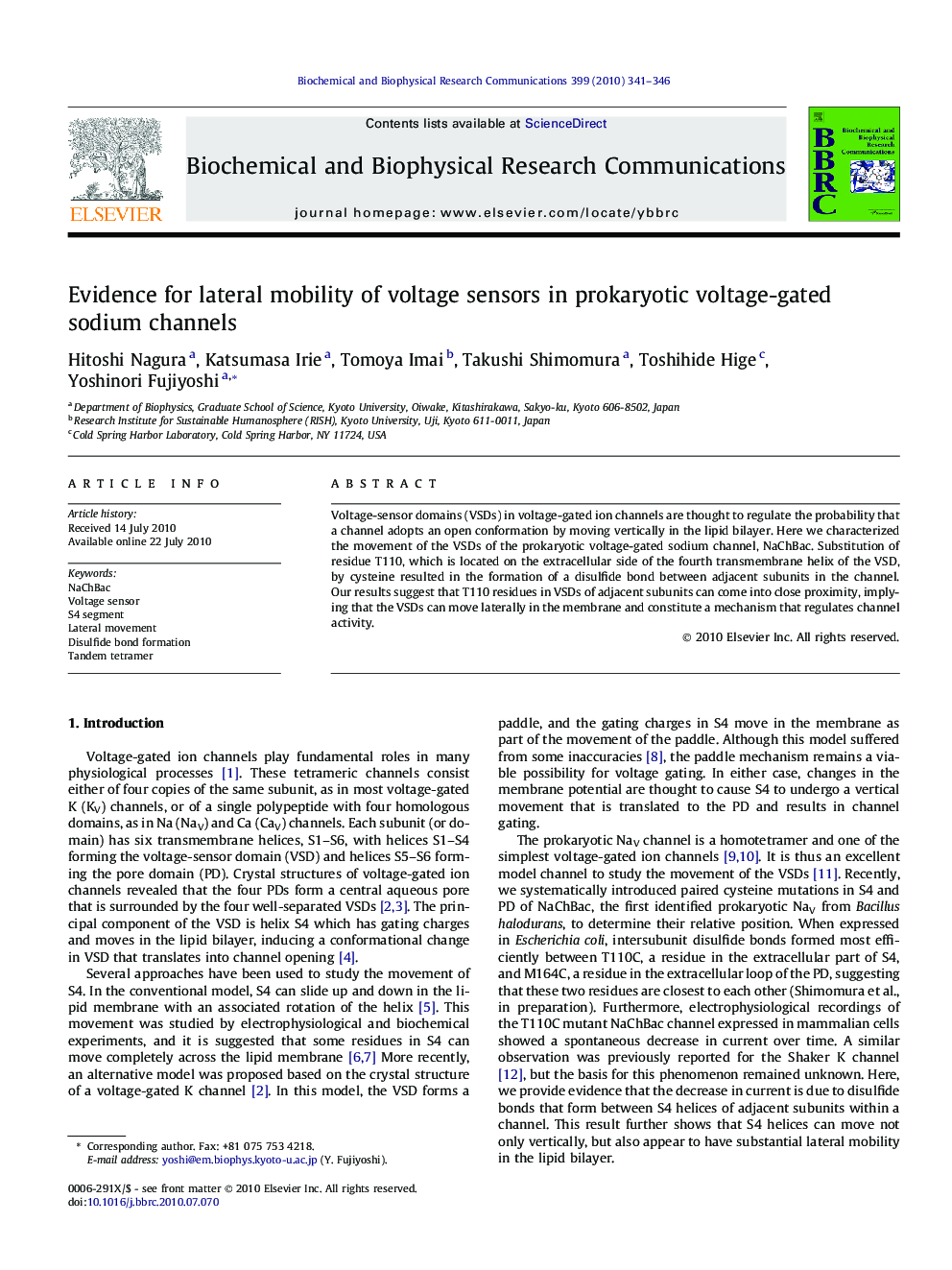| Article ID | Journal | Published Year | Pages | File Type |
|---|---|---|---|---|
| 1931602 | Biochemical and Biophysical Research Communications | 2010 | 6 Pages |
Voltage-sensor domains (VSDs) in voltage-gated ion channels are thought to regulate the probability that a channel adopts an open conformation by moving vertically in the lipid bilayer. Here we characterized the movement of the VSDs of the prokaryotic voltage-gated sodium channel, NaChBac. Substitution of residue T110, which is located on the extracellular side of the fourth transmembrane helix of the VSD, by cysteine resulted in the formation of a disulfide bond between adjacent subunits in the channel. Our results suggest that T110 residues in VSDs of adjacent subunits can come into close proximity, implying that the VSDs can move laterally in the membrane and constitute a mechanism that regulates channel activity.
Research highlights► Voltage-sensor domain of bacterial sodium channel, NaChBac, can move laterally. ► Contact between voltage sensors is not voltage dependent. ► Distance between voltage sensor and pore is relatively stable during activation. ► The lateral movement of VSDs regulates cannel activity.
